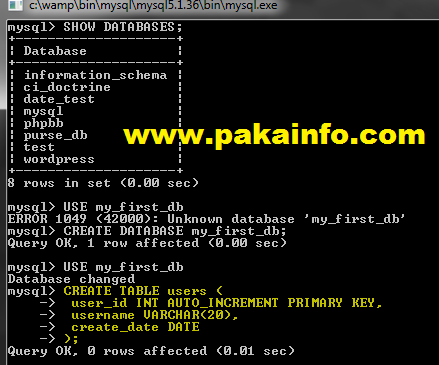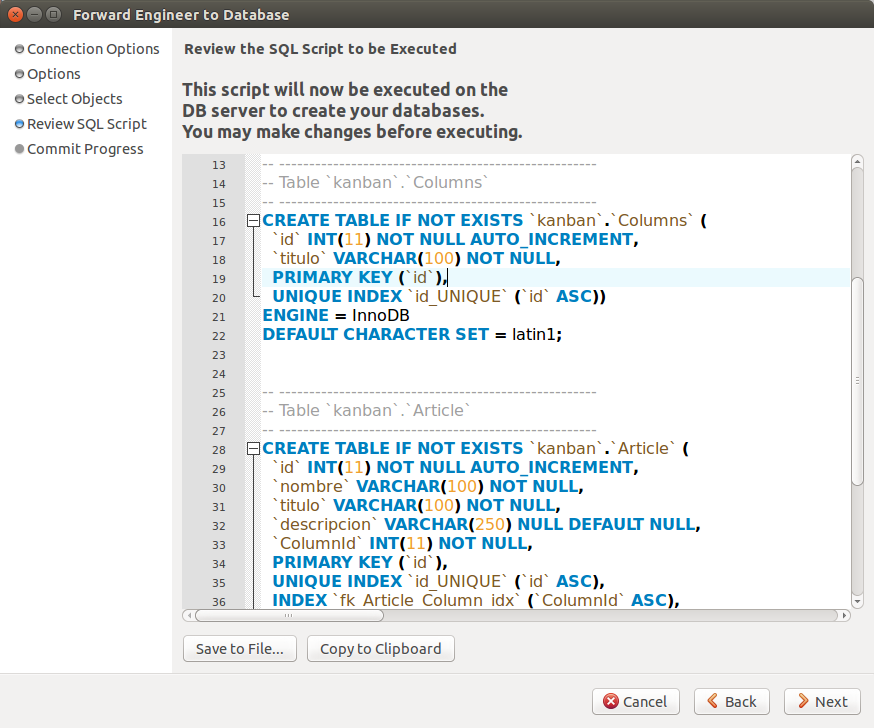

- #ANDROID STUDIO SQLITE AUTOINCREMENT INTEGER NON PRIMARY KEY HOW TO#
- #ANDROID STUDIO SQLITE AUTOINCREMENT INTEGER NON PRIMARY KEY SERIAL#
#ANDROID STUDIO SQLITE AUTOINCREMENT INTEGER NON PRIMARY KEY HOW TO#
You have gone through the use of auto increment and how to set it up in different DBMS servers. In this article, you learned everything about auto increment in SQL.
#ANDROID STUDIO SQLITE AUTOINCREMENT INTEGER NON PRIMARY KEY SERIAL#
Here’s how you can create a table and use the SERIAL keyword to set auto increment in PostgreSQL. However, you cannot set a starting value or the increment value of your choice explicitly. But it works similar to the auto increment in SQL. SERIAL in PostgreSQL is a data type, like BIGSERIAL and SMALLSERIAL. In PostgreSQL, the SERIAL keyword is used to set up an auto increment column. INSERT INTO Students (ID, FirstName, LastName, Age) VALUES (seq_Students.nextval, 'Nick', 'Chopra', 23) Īuto Increment in SQL: Setup for PostgreSQL INSERT INTO Students (ID, FirstName, LastName, Age) VALUES (seq_Students.nextval, 'Aakash', 'Roy', 25) INSERT INTO Students (ID, FirstName, LastName, Age) VALUES (seq_Students.nextval, 'Rahul', 'Kumar', 24) Let’s create the table Students and insert the values. You will now use the built-in nextval function to add values with the auto increment feature and see it in action. The syntax above will create a sequence object named seq_Students that starts with 20 and increases by 2 with a cache of 20 (the number of sequence values stored in memory).

Here’s how you can use the CREATE SEQUENCE statement in Oracle to create a sequence object for the Students' table. This object is used to generate a number sequence. To set up auto increment in Oracle, you will have to create a sequence object first. INSERT INTO Students1 (FirstName, LastName, Age) VALUES ('Nick', 'Chopra', 23) INSERT INTO Students1 (FirstName, LastName, Age) VALUES ('Aakash', 'Roy', 25) INSERT INTO Students1 (FirstName, LastName, Age) VALUES ('Rahul', 'Kumar', 24) In this case, you have to set the start_value to 200 and increment_value to 4. This time you will create a Students1 table in the example below with the MS Access server and set up auto increment in SQL with the same input values. start_value: It is the value from where you want the numbering to begin.However, you can easily change it while setting the auto increment with the following syntax:ĪUTOINCREMENT(start_value, increment_value) The default starting and increment values for AUTOINCREMENT are 1 and 1, respectively. The AUTOINCREMENT keyword is used to set up auto increment in MS Access. This time you will directly start with 1000 and have an interval of 5 between each row’s number.Īuto Increment in SQL: Setup for MS Access Let’s create the same Students table in the SQL Server and use the IDENTITY keyword to set auto increment. increment_value: It is the increment between each auto-generated number.initial_value: It is the value from where you want the numbering to begin.IDENTITY (initial_value, increment_value) The SQL Server uses the IDENTITY keyword to set auto increment with the following syntax while creating a table: INSERT INTO Students (FirstName, LastName, Age) VALUES ('Hitesh', 'Patel', 29) Īuto Increment in SQL: Setup for SQL Server

INSERT INTO Students (FirstName, LastName, Age) VALUES ('David', 'Tiwari', 26) Use the syntax to start the numbering from 100 in the Students table and then add more rows to see it in action.ĪLTER TABLE Students AUTO_INCREMENT = 100

In the MySQL server, it applies an auto increment field with the keyword AUTO_INCREMENT. You will have to create a Students table in all the DBMS and set auto increment in SQL. You will be going through some primary DBMS systems and look at how to set up an auto increment column. Several databases support SQL auto increment fields. Now, since you know what the SQL auto increment field does, let’s set it up to automatically generate unique numbers for the records you enter in the database table.


 0 kommentar(er)
0 kommentar(er)
